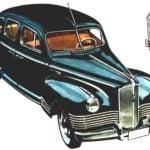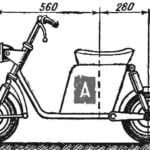 Started summer vacations, exciting travel, tourist trips. Among a variety of troubles, not the least is care leave for home plants or inhabitants of the aquarium. Some need daily watering, others — feeding. And you never know happens in the house other animals that require daily care.
Started summer vacations, exciting travel, tourist trips. Among a variety of troubles, not the least is care leave for home plants or inhabitants of the aquarium. Some need daily watering, others — feeding. And you never know happens in the house other animals that require daily care.
If there is not a good neighbor, coming to the rescue… machine (laid out in his work the principle can be used day various devices: automatic watering flowers, feeding fish, birds and even domestic animals) or, say, the time relay with audible warning device.
Consider one of the options: automatic feeding. It consists of two parts: an actuator (see Fig. A) and a hopper with a dispenser for feeding (B).
The actuator fabricated from a tin. Using the picture, proceed to its markup. First cut the very cover from the rim and divide the surface of the banks vertically into two equal parts AB and G so that the seam was strictly in the middle between the lines. This can be done using strips of paper to measure the circumference of the cans, fold the strip to make four equal parts, and from the seam to identify the location of the lines.
Now set the jar, holding it sideways on the knife blade and determine the position of the line center of gravity (CG) (at the Bank from the condensed milk it will be at a distance of about 35 mm from the bottom). Then apply, departing 7 mm from the CT up the line. On it mark the point 1 mm from a line AB. Here drill a hole Ø 3 mm for installation of the axle shaft. Then do the same on the arc side of the banks (line VG).
As the axle shafts use the M3 bolts, putting them in the holes on the inner side of the banks and securing the nuts on the outside. On top of the jar solder the flap of tin or close this place a strip of plastic film, Primeau her thread. The Bank is suspended under the water tap using clamps so that it had a slight slope (see figure) and rotated freely.
On one of the axle shafts rigidly secure the knee (a strip of tin or aluminum with a length of 30 mm between the set screws M3). At the end of the elbow loosely install the water meter with a length of 20 mm, made of the same materials. The chopper has two holes in the center — under the M3 bolt that fits in the threaded hole on the knee, and another on the end for garter thread.

Now we have to adjust the faucet: in a minute he needs to give 4-5 drops, then the drive will work approximately 24 hours. Of course, the “dropper” can serve not only the faucet, but just a bucket of water or a barrel. As the regulator is mounted in the bottom of the tank bolt with nut: turning it, you can get any length of education drops. The capacity of the tank for linen, for example, is sufficient to drive the motor for nearly 5 months (actuator is activated to about 200 g water; 1 g of water — 20 drops).
The drive works in the following way. Drop by drop fill the jar, displacing the centre of gravity upwards and forming the overturning moment about the axis of rotation. Turning over, the Bank can issue a portion of accumulated water or to actuate the shutter of the hopper with food, electroradiology etc Freed from water, the Bank will automatically take its original position, ready to repeat the cycle.
As a hopper for the feed, you can use any large plastic bottle with a screw stopper. The figure shows a hopper with dry food for the fishes: it is plastic bottle of liquid soap in the tube with a stopper. He (see figure) consists of a shaft with the Assembly in the blades made of sheet metal. The blades are firmly tightened on the shaft with two nuts. At the end of the shaft tightly fits over the thrust with a length of 45 mm with a weight (ball of clay). Pull the nylon thread connects to the spinner drive. Tube is screwed on the bottle neck (thread which is shortened on one strand), and a bottle bracket is strengthened over the feeder tank.
Is now to drive the shutter, and the portion of food I will sleep in a feeding trough. The dispenser serves as a slit-like hole in the tube located under the blades of the shutter. The amount of feed given depends on its length and width, and the type of feed.
B. POPOV



